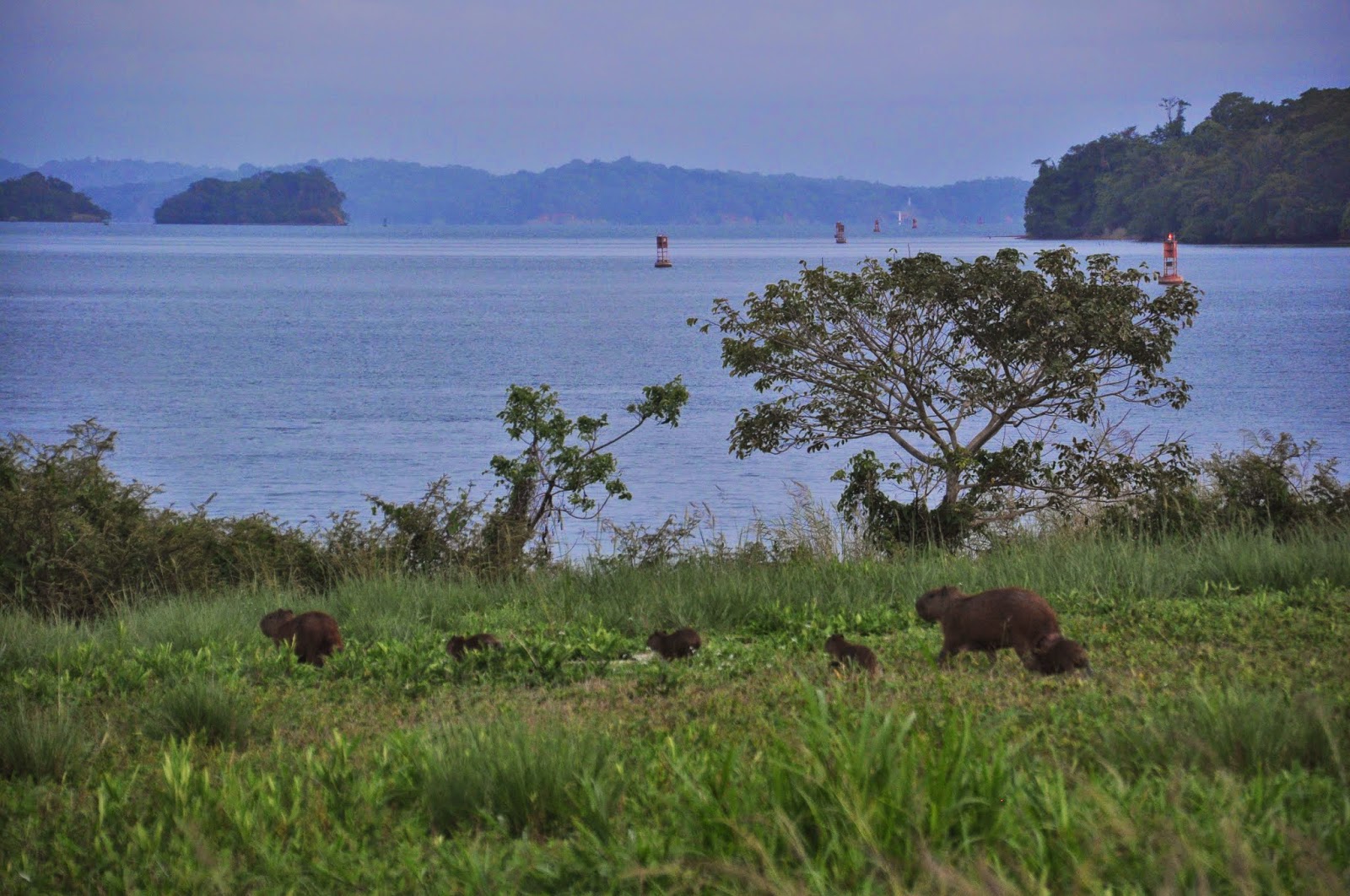Leaving Bocas all I could think about
was getting to the San Blas archipeligo and the tribal islands of
Kuna Yala. Like Cuba it had become a key destination on my shakedown
in the Caribbean.
But even en route there were wonderful
places to explore, especially the Rio Chagris River, Portobello and
Ilsa Grande.
Rio Chagris is the river just north of
Colon and the Atlantic entrance to the Panama Canal. It required a
bit of daring-do to cross the bar in rough conditions, which wasn't
helped by the sight of bleached broken yachts on the shoreline just
at the point of no return.
The river was dammed to create Lake
Gatun – a major chunk of the Panama isthmus crossing, to supply the
water for the canal locks, and produce the hydro power for all the
canal's operational needs.
Reminiscent of motor sailing up the Rio
Dulce in Guatemala, this was an exquisite way to have a sneak preview
of the canal transit ahead of me. But also to experience true
Panamanian tropical rainforest in complete isolation., punctuated by the spine-tingling chorus of Howler monkeys and deafening thunderclaps.
Apparently the authorities now send a patrol boat to warn cruisers and fishermen before they release excess water into the river, but there are quite recent tales of yachts being flushed out to sea when they just - opened the control gates!
Apparently the authorities now send a patrol boat to warn cruisers and fishermen before they release excess water into the river, but there are quite recent tales of yachts being flushed out to sea when they just - opened the control gates!
I was shocked when making a night-time
arrival how many cruising boats are anchored here (and most of them
without working anchor lights!) It's a place to hole up while waiting
for a canal transit but it seems many get stuck in this sleepy little
backwater. The population is mainly of African roots, and there is a
Congo music revival happening right now.


Isla Grande is a convenient overnight
anchorage before the Kuna Yala, and it is a delight to visit. Popular
with Panamanians for weekend getaways, it is bright and resort-like,
no cars, and full of quirky budget establishments.


My plan was to spend ten days cruising the archipelego of San Blas, knowing that would be just scratching the surface as there is “an island for every day of the year”.
After clearing in at Porvenir (the Kuna
Yala is an autonomous region within Panama , self-administered by the
tribal authorities with each island having its own take on matters)
it was a matter of ruthlessly deciding which areas to visit and which
to leave out. We chose a circuit of the Chichime/Lemmon Cays, the
Western then Eastern Holandes, further east to the Coco Banderos,
then inshore to the Mola making islands of Rio Sidra and Mormake
Tupu, then into the Gulf of San Blas with the possibility of
exploring some of the mainland rivers by dinghy.
The Holandes were my favourite,
uncrowded (not many deserted, but often only one or two families
resident). The water colours, quality of snorkelling, and regular
contact with the Kuna people were all highlights. I don't think the
sails were used at all, as there was no wind, and the boat took on a
very damp smell. Every anchorage was christened with glorious plunges
into the water to wash off the sweat and cool down.
As they say, a picture is worth a
thousand words, so check out my photos for a glimpse of life in the
Kuna Yalas.
After Mormake Tupu the exposure to
never-ending canoes of seafood & vege sellers, mola sellers, et
al, and the constant warm damp muggy conditions in this,
the rainy season, I didn't feel a need to spend any more time in the
Kuna Yala. And the enormous amount of plastic trash and beach litter
was a sad reminder that even the best intentions of the Kuna can't
protect their islands.











.JPG)



.JPG)
.JPG)

.JPG)
No comments:
Post a Comment